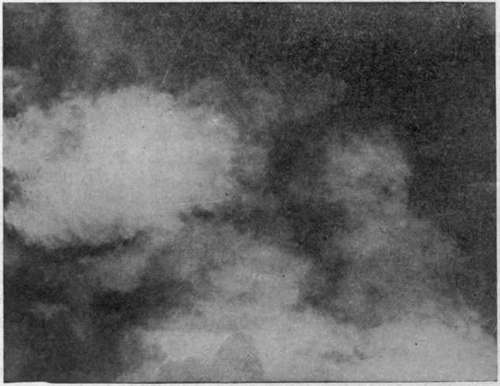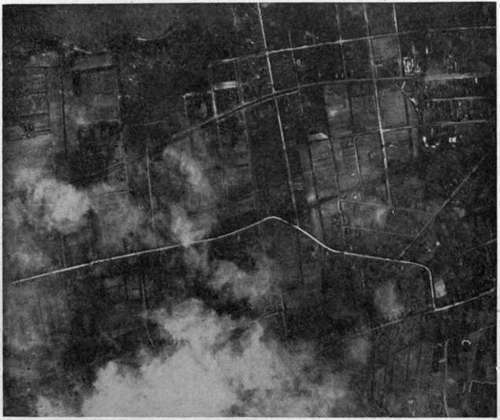Effects Secured By The Use Of Filters
Description
This section is from the book "Airplane Photography", by Herbert E. Ives. Also available from Amazon: Airplane photography.
Effects Secured By The Use Of Filters
The efficiency of yellow filters for haze-cutting is best shown by photographs taken at high altitudes with filters and without. Such illustrations are given in Figs. 107 and 108, where the first photograph is one taken at 10,000 feet without a filter, the second taken at the same altitude under the same conditions, but with an orange filter. Both are on panchromatic plates, and it will be seen that even with these plates the filter makes all the difference between a useless and a useful picture. But it must be clearly understood that the difference here lies between a plate sensitive chiefly in the blue and violet, and for aerial exposures is capable of showing more than the eye can see if yellow or orange goggles are worn. To do this it would be necessary for the photographic action to take place by deep red or infra-red light, which would demand exposures now out of the question.

Fig. 107. - A photograph taken at 10,000 feet, without a filter.

Fig. 108. - Photograph taken at same time and over same neighborhood as Fig. 107, but with an orange filter.
Filters are almost always necessary in photographing from high altitudes or in making distant obliques. At times, particularly after a heavy rain, the air is clear enough so a plate affected only by the yellow, orange and red. The difference is not between what the eye sees and what a plate with a filter sees, as is sometimes supposed. As shown in Fig. 108, a filter enables the plate to photograph through the haze between clouds, but not through the clouds themselves. In general, no filter and plate combination which is feasible that filters may be dispensed with. Clearing weather was therefore chosen whenever possible for making obliques of the battle front.
Continue to:
Tags
camera, lens, airplane, aerial, film, exposure, photography, maps, birdseye
